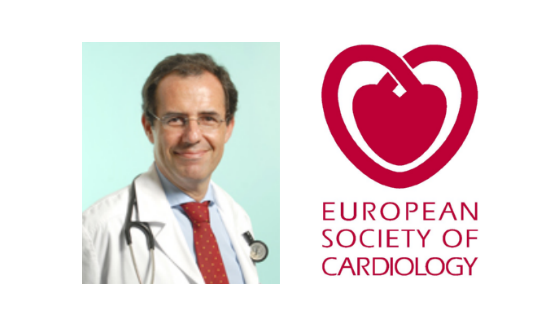A personal view on the 2014 ESC-HCM Guidelines by Dr. Nuno Cardim

Dr. Nuno Cardim, member of HeartGenetics advisory board and invited reviewer of the 2014 ESC-HCM Guidelines, shares his personal view on some of the major key-points of these guidelines to which special attention should be paid.
Key-Point: Recognition of the wide range of diseases that can cause HCM
Dr. Nuno Cardim: As expected, the guidelines are now on-line with the ESC classification of Cardiomyopathies of 2007, enhancing a comprehensive clinical approach the “unexplained LV hypertrophy (LVH) phenotype”. Accordingly, HCM is not a single disease, but a disease with many faces – a number of genetic and non genetic diseases that share a common cardiac phenotype, LVH. So, the diagnosis of HCM is the beginning of an investigation story seeking for the disease that causes LVH.
Key-Point: Genetics, genetic testing and genotype-phenotype correlations
Dr. Nuno Cardim: The guidelines provide clear rules to the request and interpretation of genetic tests. Specifically, genetic tests should be performed in certified diagnostic laboratories with expertise in the interpretation of cardiomyopathy-related mutations in four situations:
1) all individuals fulfilling diagnostic criteria of clinical HCM to allow genetic cascade of relatives for sarcomeric HCM;
2) individuals with clinical suspicion of specific diseases causing the HCM phenotype (phenocopies);
3) individuals in whom, after clinical and imaging assessment performed by experts in this disease, the diagnosis of HCM remains doubtful/unclear/borderline (for instance, in athletes in the gray zone);
4) in deceased patients with pathologically confirmed HCM (post- mortem genetic analysis), to enable genetic cascade of relatives.
The role of expert counseling before and after genetic analysis, as well as genetic counseling are also strongly emphasized, enhancing the close cooperative work between genetic and cardiology in HCM.
Key-Point: Genotype-phenotype correlations in HCM
Dr. Nuno Cardim: In general, patients with a positive test for sarcomere protein mutation a) present earlier in life b) report a higher prevalence of family history of HCM and of sudden cardiac death c) tend to have more severe hypertrophy, d) more severe microvascular dysfunction and e) more myocardial fibrosis. Multiple sarcomeric protein mutations are present in up to 5% of individuals and tend to present earlier with a more severe phenotype.
However, correlations between specific mutations and specific phenotypes and outcomes are still under research and still not recommended (though previous studies have suggested that some specific sarcomeric protein mutations are associated with a poorer prognosis than others, these observations are based on small numbers of affected individuals, are sometimes inconsistent between studies, and are limited by the rarity of individual mutations).
Key-Point: Approach to the major clinical profiles of the disease: sudden cardiac death (SCD), heart failure (HF) and atrial fibrillation (AF)/stroke
PREVENTION OF SCD
Dr. Nuno Cardim: One of the most important innovations in this guideline is the new “on-line” risk calculator (HCMRisk-SCD) that uses eight clinical measures to estimate the 5-year risk of SCD. This estimate is then used to stratify patients into high-, intermediate-, and low-risk categories that can be used to guide the use of ICDs in a more rational way taking into account their clinical efficacy versus the potential risks, complications and costs of these devices.
MANAGEMENT OF HF
Dr. Nuno Cardim: Treatment of heart failure in patients with HCM is challenging and depends, among other vectors on diastolic dysfunction, intraventricular obstruction and systolic dysfunction. All these issues are addressed in these guidelines.
AF/STROKE PROFILE
Dr. Nuno Cardim: Important considerations are provided on this topic, specifically on the low threshold (not to be based on the CHADS-VASc score) to initiate oral anticoagulation (first line with vitamin K antagonists, new oral anticoagulants only when VKA fail to maintain adequate anticoagulation, produce side effects or when INR monitoring is not possible).
Key-Point: New sections included in the guidelines
Dr. Nuno Cardim: The guidelines provide, for the first time detailed and tailored advice to the assessment and management of :
a) women with HCM (guidance on pre-pregnancy assessment, the management of labour and detailed recommendations for contraception, sterilization, and termination).
b) children with HCM (advice on key sections on diagnosis and treatment in children).
c) practical everyday issues that affect the lives of patients with HCM, from sexual activity to travel and life insurances, from vaccination to driving and occupation eligibility.